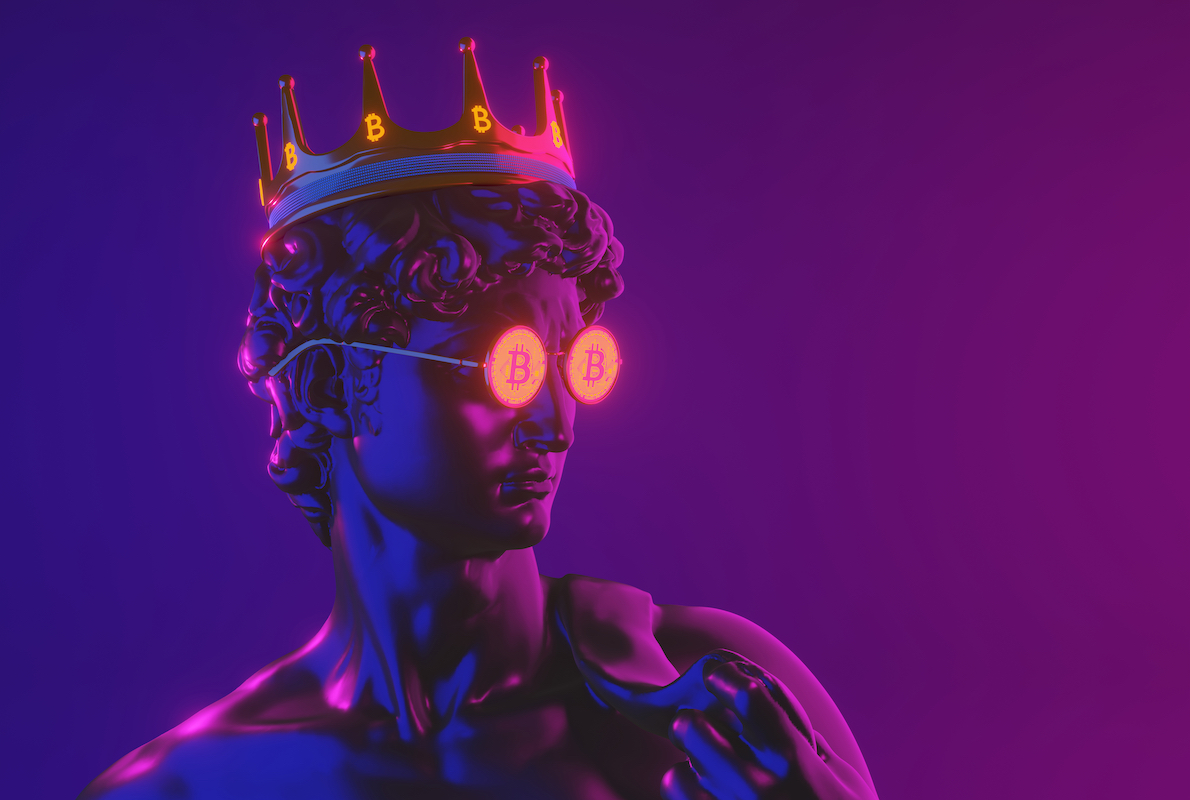This website uses cookies so that we can provide you with the best user experience possible. Cookie information is stored in your browser and performs functions such as recognising you when you return to our website and helping our team to understand which sections of the website you find most interesting and useful.
The Wealth Report and the digital disruptors shaking things up
By Lysanne Currie | 23 May 2022 | Wealth,
As the finance world increasingly feels the gravitational pull of disruptive, groundbreaking platforms, we take a deep dive to get a better look

Over the past 20 years, digital disruptors have shaken up the 200-year-old wealth management industry. In this year’s Wealth Report, we head to the web to drill down into the Metaverse, NFTs and other digital transformations, to take a closer look at what makes these new platforms so intriguing.
The Metaverse
The Metaverse might be best described as a cluster of virtual worlds in which our digital avatars can play video games, buy clothes, go to interactive gigs, go on dates – or even go to work. The name may have been coined some 30 years ago by the author Neal Stephenson in his sci-fi novel Snow Crash, to describe an all-immersive AI world – but his vision isn’t far off the reality. And it’s a world that potentially holds opportunities galore for businesses; a place to create, advertise and sell digital assets.
“I absolutely think firms should have somebody looking into this,” says Ian West, head of technology, media and telecoms at KPMG. “Otherwise, it could creep up and be like, ‘If only I’d thought about this two years ago’.”

And he’s not the only one with ‘FOMO’ when it comes to the Metaverse. Founder Mark Zuckerberg has already jumped on the bandwagon, appropriately renaming Facebook ‘Meta’, and ploughing $10bn (£7.4bn) into the Metaverse this year alone, “to unlock a massively bigger creator economy”, as Zuckerberg says.
While JP Morgan became the first Metaverse bank, Disney wants to create a theme park Metaverse, and McDonald’s has filed a trademark for a virtual restaurant in the Metaverse that delivers to customers’ real-life homes.
Elsewhere, the Balenciaga fashion house recently showcasing its Fall 2021 collection via video game Afterworld: The Age of Tomorrow. It’s good business sense: Stateside, women account for 41 percent of all gamers; while Marc Jacobs, Valentino, Vuitton and Burberry are just a few of the brands that have partnered with video games.
In November 2021, Nike filed trademarks for selling digital clothes and shoes with its swoosh logo to be worn in virtual-only worlds, by digital avatars. This a world, after all, where someone recently shelled out £19,000 on a virtual hoodie.

NFTs
Non-fungible tokens (or NFTs) are units of data, stored on a blockchain, that can be sold and traded. Unlike cryptocurrencies, they can’t be traded for equivalent amounts (in the way you could swap a ‘fungible’ tenner for two fivers). A NFT, instead, has ‘non-fungible’, one-of-kind properties. These unique digital tokens might be thought of as ‘certificates of ownership’, for example, when buying a unique crypto painting or a digital collectable, the NFT buyer’s token, which stores data about its provenance, proves they own the “original” work.
Among recent headline-grabbers, the musician Grimes sold her digital art for more than $6m, the Bored Ape Yacht Club collection featured 10,000 individuals NFTs (below), while an animated gif of the Nyan Cat meme (a rainbow-propelled flying pop-tart cat, above) sold for more than $500,000 (£365,000). Twitter founder Jack Dorsey offered an NFT of the very first tweet – bids of up to $2.5m were made. Understandably, NFTs are now sold by Christie’s and Sotheby’s.
A guarantee of authenticity and ownerships add value. There’s a lot of buzz around NFTs at the moment. According to the BBC, the total value of trade for NFTs was estimated to be worth $40.9bn in 2021, according to calculations by the blockchain data firm Chainalysis. As Marc Hauser, head of F10 Switzerland, a fintech incubator, says: “NFTs may well be a riddle to some in wealth management (and beyond), but they are certainly no joke and are very likely to stay relevant in the years to come.”
However, in addition to concerns over their environmental impact, NFTs have recently become a target for cyberscammers, selling fake tokens, trading on ignorance of how crypto actually works. Not everyone’s a believer in this latest craze. David Gerard, author of Attack of the 50-foot Blockchain, has called NFT- sellers “crypto-grifters”. While former Christie’s auctioneer Charles Allsopp told the BBC that “the idea of buying something which isn’t there is just strange… I think people who invest in it are slight mugs, but I hope they don’t lose their money.”

Wealth tech
In its 2020 annual report, the Boston Consulting Group wrote, “Digitisation has put more of the world within reach, increasing economic productivity and allowing individuals to participate in an ever-more-global economy. All of this has been good for wealth”. And, as Marc Hauser added this year: “Many millennials and gen-Zs are already trading on newly-emerging platforms and not going to the bank their parents relied on.”
Yes, the future of wealth management is digital, and the pandemic just accelerated the curve. Recent ‘WealthTech’ trends include advances in cloud technology, big data, machine learning and artificial intelligence – in the shape of digital or robo-advisors (aka Automated Wealth Managers), such as VestmarkONE Robo Solution, which provide algorithm-driven financial planning services, with barely any human supervision or none whatsoever.
In addition, robo-retirement platforms use algorithms to help clients create a retirement portfolios, while ‘Quant advisors’ use AI to manage come up with investment strategies.
Elsewhere, companies will increasingly use RegTech (or Regulatory Technology) to carry out everything from due diligence to data mining and management, while Quantum computing, though still in its infancy, is predicted to tackle any number of challenges faced by WealthTech and FinTech.
Robot bank clerks and supervillain-style super-computers – whatever next? Watch this space…

Web3
From the Godfather III to Jaws 3D, it’s a truism that ‘threequels’ aren’t generally very popular. But, when applied to the World Wide Web, could Web3 be about to buck the trend? And are investors correct that Web3 is “the future of the internet”?
You’ve almost certainly heard of Web 1.0 and Web 2.0. The first iteration covered, roughly, the early 1990s to the early Noughties – the days of big chunky desktops when social media was but a glint in the Internet’s eye.
The second, funkier iteration – the internet’s wayward teenage years – charted a rockier, yet altogether more connected course through our present-day badlands, with an explosion of user-created content. Ironically, of course, it would take behemoths like Facebook, Twitter and YouTube to monetise all that homegrown content, and grow rich off the back of it.
Now enter Web3: a catch-all term for an exciting new vision powered by blockchain technology and Artificial Intelligence; a new sort of marketplace, revolving around cryptocurrencies such as Ethereum, Bitcoin and NFTs.
And, crucially, ‘decentralisation’: this new movement distinguishes itself from “Big Tech”, those who have monopoly over the Internet. According to investor and Web3 fan Packy McCormick, it’s “the internet owned by the builders and users, orchestrated with tokens.” Web3 will allow creators and users a way to monetise their content, unlike, say Facebook, which has gotten rich by selling our user data off to third parties.







